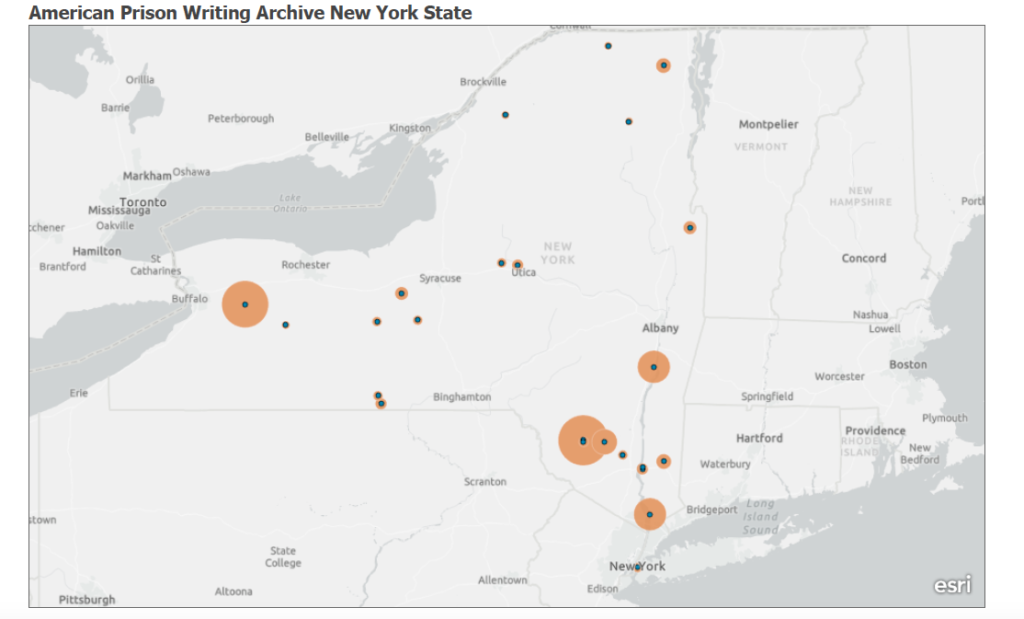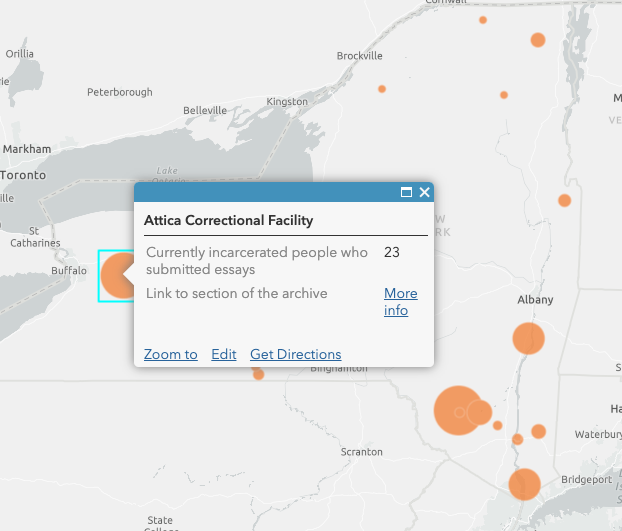Link to the map: https://arcg.is/1yqafT0
For my praxis assignment, I wanted to create a map that visualized data I am using for my own research, which is working with the American Prison Writing Archive (an open source database that currently hosts over 2,100 essays submitted by incarcerated people about their experiences in prison). I decided to map all the prisons in New York State in which currently incarcerated people have submitted essays to the archive. As you hover over each prison, you can see the name of the facility, the number of submitted essays, and a link that directs you to the particular section of the archive.
This was the first time that I used a mapping software, so I decided to sign up for Learn ArcGIS. The site offers constructive lesson galleries on various capabilities to choose from which was really helpful; I could go through every step of the mapping lesson gallery beforehand and made use of it during the completion of the assignment. First, I created the cvs file of the data provided by the archive, adding columns of longitude, latitude, the link to the archive section, and then uploaded it to the map. The software displays the data so you can immediately see patterns by creating different-sized circles and a legend that tells you the circles represent the number of submitted essays. In a next step, I configured pop-ups to only display the name of the prison, the number of incarcerated people who submitted essays as well as the link to the archive as this is the information I am using for my research project. In terms of future improvements, it would be great to display the data as an interactive map that not only shows the location/the number of submitted essays but also categories of subject matters the essays address (the project team of the APW archive is currently working on categorizing its collection to improve the search options/filters).
I really enjoyed working with ArcGIS Online. This mapping assignment inspired me to continue to explore how spatial and non-spatial data can be modeled for my social justice research projects.





